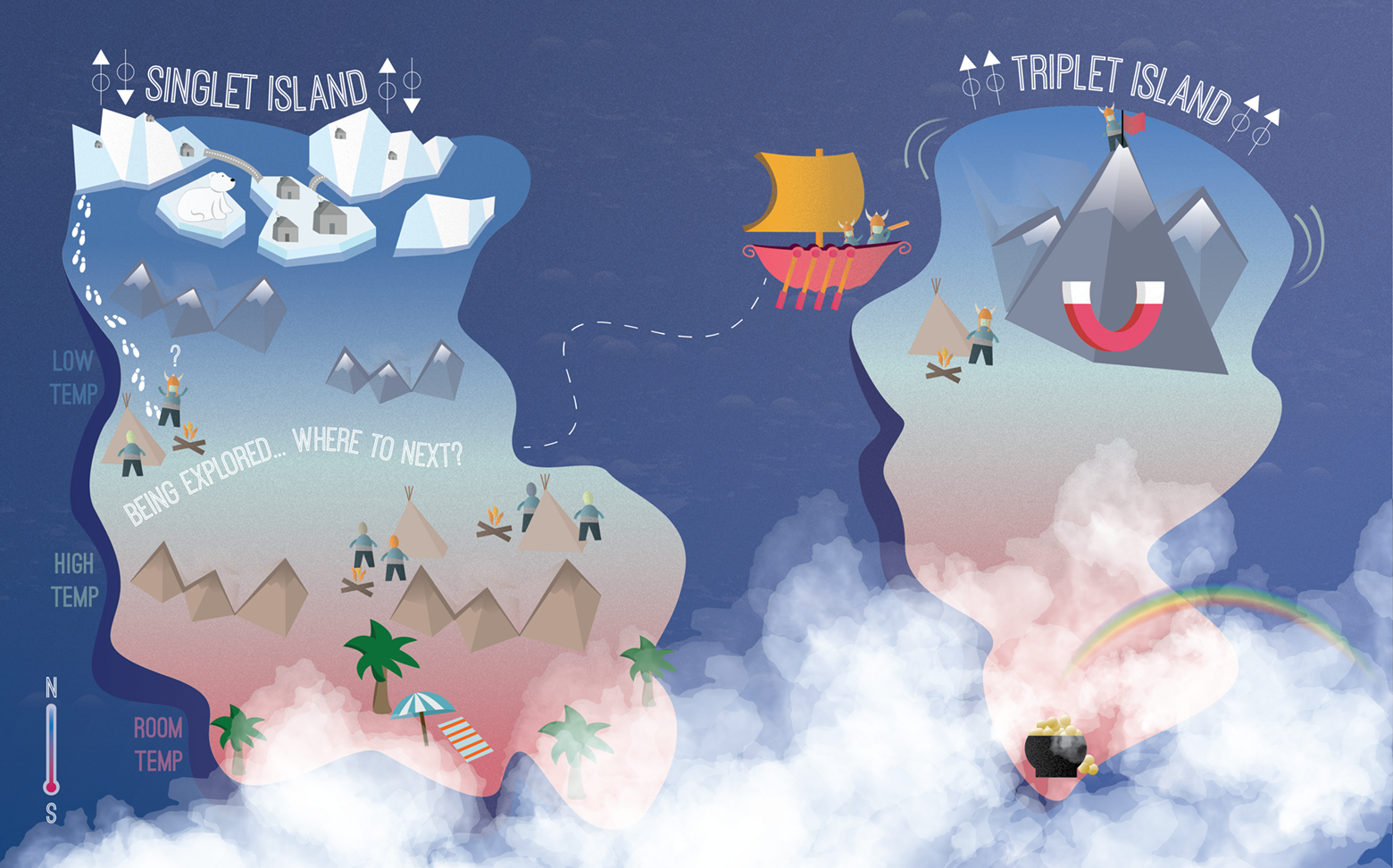 We have already found lots of superconductors, but this whimsical illustration shows why one superconductor's newfound properties may make it especially useful. Most known superconductors are spin singlets, found on the island to the left. Uranium ditelluride, however, is a rare spin triplet, found on the island to the right, and also exists at the top of a mountain representing its unusually high resistance to magnetic fields. These properties may make it a good material for making qubits, which could maintain coherence in a quantum computer despite interference from the surrounding environment. Credit: N. Hanacek/NIST
We have already found lots of superconductors, but this whimsical illustration shows why one superconductor's newfound properties may make it especially useful. Most known superconductors are spin singlets, found on the island to the left. Uranium ditelluride, however, is a rare spin triplet, found on the island to the right, and also exists at the top of a mountain representing its unusually high resistance to magnetic fields. These properties may make it a good material for making qubits, which could maintain coherence in a quantum computer despite interference from the surrounding environment. Credit: N. Hanacek/NIST A collaboration of the NIST Center for Neutron Research, the UMD's Center for Nanophysics and Advanced Materials and the Ames Laboratory has yielded a new superconductor with properties highly advantageous for the development of quantum computers. Uranium ditelluride, or UTe2, described in Science magazine, resists magnetism and could maintain coherence in qubits. Read more at NIST.gov.